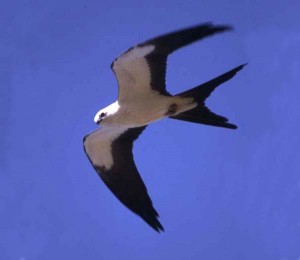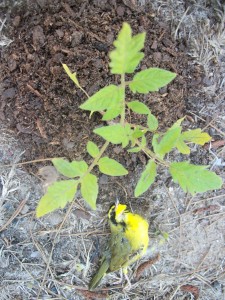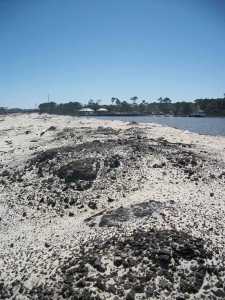Proof! Warblers Can Read!
|
|
“Seen anything?” I asked at the Shell Mounds on Dauphin Island (a world class birding area). “No,” the Michigan birder replied, “but last year my brother came here and saw 10 ‘lifetime birds’ in 20 minutes.” “Wow,” I said, “and last year was a down year.” “Then, what would you call this year! Can’t believe my wife and I came 1100 miles for this! Do you expect any ‘fallouts’ soon?” “Not really,” I answered, “we’ve had the storms and cool, strong north winds to produce ‘fallouts’ several times but the birds just aren’t arriving in any numbers at all.”
Everyone I’ve asked says this is “the worse spring in memory.” The warblers, the highlight for many birders, have been the most conspicuous in their absence. Most birders have only seen a few warblers. So where are the birds this spring? One birder from Georgia said, “I just hope they’re still alive.” During the spring migrations, in good years, like 2009, I see hundreds of colorful warblers of more than 20 species. Even in off years, I see around a hundred warblers of a dozen or so species. This year, after many outings, I’ve seen just one migrating warbler, a hooded warbler (not counting the one that fell dead in my backyard). Like all years, this spring has had some highlights. My son, Nicholas, saw a swallow-tailed kite. These magnificent birds generally fly up and down the Dauphin Island sand dunes and above the wooded areas of Dauphin Island. Several in my family have also seen some bald eagles near Bay Front Park in Alabama Port. I have also seen some orioles, finches, kingbirds, and vireos. Unfortunately, these have shown up in much fewer numbers and varieties than usual. On Dauphin Island, even the non-migrants are a fewer in number. Woodpeckers, wrens, thrashers, sparrows, blue jays, cardinals, towhees, and mockingbirds are noticeably fewer. Somehow, according to experts, the birds, just like the humans, have become alarmed after reading reports from “various media outlets.” After all, according to the experts, it’s “fair to say that the oil is indeed gone.” But somehow, the birds too have failed to close “the gap between the public perception of the oil spill and the reality of where we stand.” And where do the experts say we stand? “The seafood appears to be abundant and is indeed safe to eat while the beaches are among the finest in the world.” So if you happen to see any gullible migrating birds, please pass the word along that all is well in the gulf and the surrounding areas. Also be sure to warn the birds about the “clear and certain danger” of “various media elements” who might cast doubts on the experts who say that there are “no ecological dangers” or “grave concerns” for the public to worry about … only “questions” of “academic interest” (for examples of such expert quotes see http://oil.disl.org/pdf/DHOSPerspective.pdf – for examples of irresponsible media keep reading Umpteen Horizons). |
 April 8, 2011
·
April 8, 2011
·  Leo Denton ·
Leo Denton ·  4 Comments
4 Comments
 Tags: Bird migration, Dauphin Island, Fefe Dobson, Warblers · Posted in: Nature, Oil spill
Tags: Bird migration, Dauphin Island, Fefe Dobson, Warblers · Posted in: Nature, Oil spill




4 Responses
I’ve seen them around our house too!
Report comment
^
Report comment
Other people I know too have seen dead warblers in their yard.
Report comment
Birds are few here also. We usually have bluebird, chickadees, titmouse,rose brested grosbeaks and indigo buntings at our feeders or nesting. Even the goldfinch were down in numbers. We would have hundreds on the feeders and ground, but not this year. Dennis did see the bald eagle around Coden waterfront.
Report comment
Leave a Reply